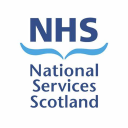‘Block and replace’ regimen for 36 months.
- Carbimazole is commenced in a total daily dose of 0.75 mg/kg/day,(5mg and 20mg tablets).
- Initial Dose should not exceed 40mg per day. The intention is to completely prevent endogenous thyroxine production. Thyroxine is then added in a replacement dose as the patient becomes euthyroid and then hypothyroid.
- If thyroxine values remain elevated (> 2SD, i.e. outside the lab ref range) at 2 months into treatment or beyond with a suppressed TSH then consider increasing the dose to 1 mg/kg. However, it is unlikely that a child will require more than 40mg daily of Carbimazole, so consider compliance issues if larger doses appear necessary.
- When Free thyroid hormone levels are <15 pmol/l, start thyroxine in a low replacement dose ~ 75 micrograms / m2.
- If the TSH is suppressed and the free thyroxine is low or in the bottom part of the normal range in the initial phase of treatment (the first 4 months) then thyroxine should still be commenced. (A delay in the rise of TSH after treatment has commenced is common).
- The treatment regimen may not require adjustment if the free thyroxine is relatively high but the TSH is normal.
- If compliance is not a concern and if the dose of thyroxine is not greater than 75micrograms/m2 then a suppressed TSH beyond the first 4 months of therapy should be managed by increasing the dose of carbimazole in the first instance.
- If the patient becomes thyrotoxic with a suppressed TSH when the biochemistry has been normal at an earlier stage of therapy – check compliance and consider increasing the dose of carbimazole by 5 mg/day. It is unlikely that a child will require more than 40mg daily of Carbimazole, so consider compliance issues if larger doses appear necessary.
- If the patient subsequently develops a high TSH then increase the dose of thyroxine up to 100 micrograms/m2 /day or by 12.5 to 25 microgram increments (12.5 micrograms under 30 kg, 25 micrograms for those over 30kg)

